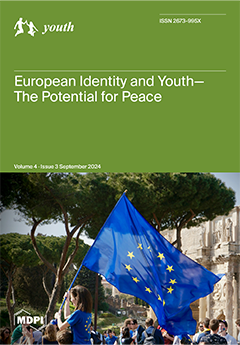Several youth volleyball tournaments are played across multiple consecutive days with athletes averaging 3–4 matches/day. This study evaluated the differences in workload of female youth volleyball athletes across days and by position during multi-day tournaments. Athletes (
n = 22, 16.4 ± 0.4 years) wore an accelerometer during 12 two- and three-day tournaments. Workload was measured via kinetic energy (KE, J/lb), total jumps (TJ), high jumps (HJ, >51 cm), average jump height (cm), and percentage of high stress movements (%) via VERT accelerometers. Data were analyzed across days and by position as an average per day and analyzed via repeated measures analyses of variance. Across days, workload averages ranged 484.8–558.0 J/lb for KE, 27.3–31.2 TJ/match, 37.5–37.9 cm/jump, 5.2–6.5 HJ/match, and 20.1–20.7% high stress movements/match, with no difference (
p = 0.300). Setters (49.2 ± 24.3 jumps) jumped more than liberos (13.0 ± 6.8 TJ,
p = 0.005), and middles (45.8 ± 4.1 cm) jumped higher than all other positions (setters: 28.8 ± 3.6 cm, outside hitters: 41.3 ± 4.2 cm, and liberos: 27.0 ± 4.1 cm,
p = 0.000–0.044). Athletes appeared to perform and recover sufficiently between days of play such that their external load was not affected. The level of competition tends to become more evenly matched as the tournament progresses, thus there may have been less physical demand early in the tournaments due to unequal competition levels compared to the final day of the tournament.
Full article




